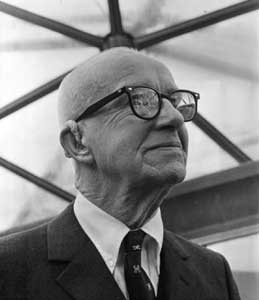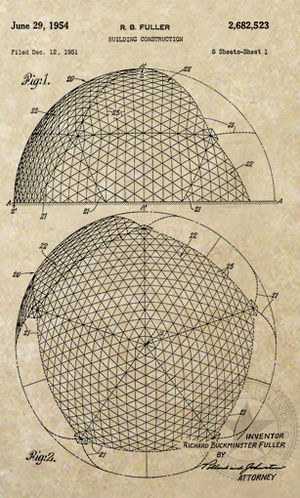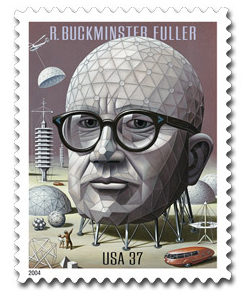Buckminster Fuller
Biography
Born: 12 July 1895
Died: 01 July 1983
Buckminster Fuller was an American architect, utopian futurist, and inventor. He was concerned with the question of whether or not humanity would be able to survive as residents on the planet Earth for an extended amount of time, and if so how that would be done. The author of more than twenty-eight books and the creator of numerous inventions, he is best known for the invention of the geodesic dome and for his impact on the field of architecture. Fuller achieved only limited success in making his utopian ideas into reality, and most of his inventions were never put into production, but he did achieve a high degree of visibility later in his life and has influenced a wide spectrum of people. Through the power of his ideas and his unflagging optimism he became an inspirational figure for many people.
Fuller was born in 1895 in Milton, Massachusetts. A lackluster student, he briefly studied at Harvard before being expelled for his “irresponsibility and lack of interest.” He then went on to work in a variety of manual jobs, including a long stint as a meat packer. He served in the U.S. Navy during World War I, where he was employed as a radio operator, and in the 1920s he helped his father-in-law develop a business manufacturing light-weight building materials. The business went bankrupt, and left Fuller with very little money. In the winter of 1927, while living in low-quality housing in Chicago, his daughter died of pneumonia. The experience almost drove him to suicide, since he considered himself responsible, but at the last moment he decided instead to undertake “an experiment, to find what a single individual can contribute to changing the world and benefiting all humanity.”
From that point on, Fuller worked to develop inventions and ideas that might benefit humanity, most notably in the fields of architecture, transportation, and sustainable development. In 1932, for example, Fuller designed an aerodynamic car with three wheels - two in front and one in back - that was shaped like a tear-drop and could turn sharply. In the late 1920s he began experimenting with lightweight plastic building materials, constructing a small dome by assembling triangle components into geometric shapes. This “geodesic dome” became his most famous invention. Because the triangle is the basic unit of the structure, the dome is extremely stable and can be made out of very lightweight materials. Very large domes can be assembled that are structurally much stronger than similar sized buildings designed in other styles but made of similar materials. Recognizing the importance of the design, the military soon began building domes for radar stations and other buildings, and in the 1950s Fuller designed a number of very large and impressive domes, thereby establishing an international reputation for himself. The Epcot Center at Walt Disney World is probably the best-known example of a geodesic dome today, but there are numerous other examples scattered across the United States.
Fuller was profoundly optimistic about humanity’s chances for long-term survival. He was struck by how much things had changed in a relatively short amount of time—for example, by the fact that illnesses that used to kill even the most elite members of society are now routinely treated even among the relatively poor. He believed that sometime soon everyone alive would be able to live like a “billionaire” if resources were simply used more and more efficiently (an idea he called “ephemeralization”). Wealth can be increased, he argued, by recycling resources into newer products whose more technically sophisticated designs requires less material and occupy less space. Fuller argued that the world’s accumulation of relevant knowledge, combined with bulk quantities of key recyclable resources that had already been extracted from the earth, had reached a watershed level in which competition for resources is no longer necessary. As a result, he argued, cooperation has become the ideal survival strategy. “Selfishness”, as he put it, “is unnecessary and...unrationalizable.” With these types of arguments, Fuller tried to inspire humanity to understand that even in the context of limited resources an endlessly ever-increasing standard of living is possible for everyone. We are all passengers, he argued, on “spaceship earth.” Although most of his ideas never materialized, the strength of his vision continues to inspire.


